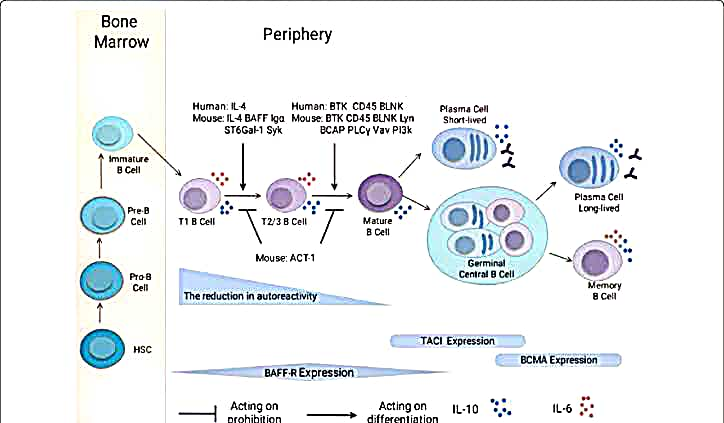Discuss the processes of B cell sensitization, activation, and differentiation, describe the structure and function of antibodies, and explain the primary and secondary immune responses to antigen exposure.
Discuss the processes of B cell sensitization, activation, and differentiation, describe the structure and function of antibodies, and explain the primary and secondary immune responses to antigen exposure.
B - CELL SENSITIZATION : when a B cell encounters the antigen that binds to its receptor , the antigen molecule is brought into the cells by endocytosis , reappearing on the surface of the cell bound to an MHC class II molecule . When this process is complete the B cell is sensitized . The memory B cells remain inactive at this point .
Diagram showing the activation of B cell

B - CELL ACTIVATION : B cells are activated when their B cell receptor ( BCR ) binds to either soluble or membrane bound antigen . This activates the BCR to form micro clusters and trigger downstream signalling cascades . Cytokines produced by T cells and other cells are important in determining what isotype the B cells express .
B - CELL DIFFERENTIATION : the terminal differentiation of a B cell is becoming a plasma cell which is essentially a cell devoted to secreting antibodies . Plasma cells that migrate to the bone marrow are long - lived plasma cells and can persist for extended periods of time and secrete antibodies into the bloodstream .

Step by step
Solved in 2 steps with 3 images








